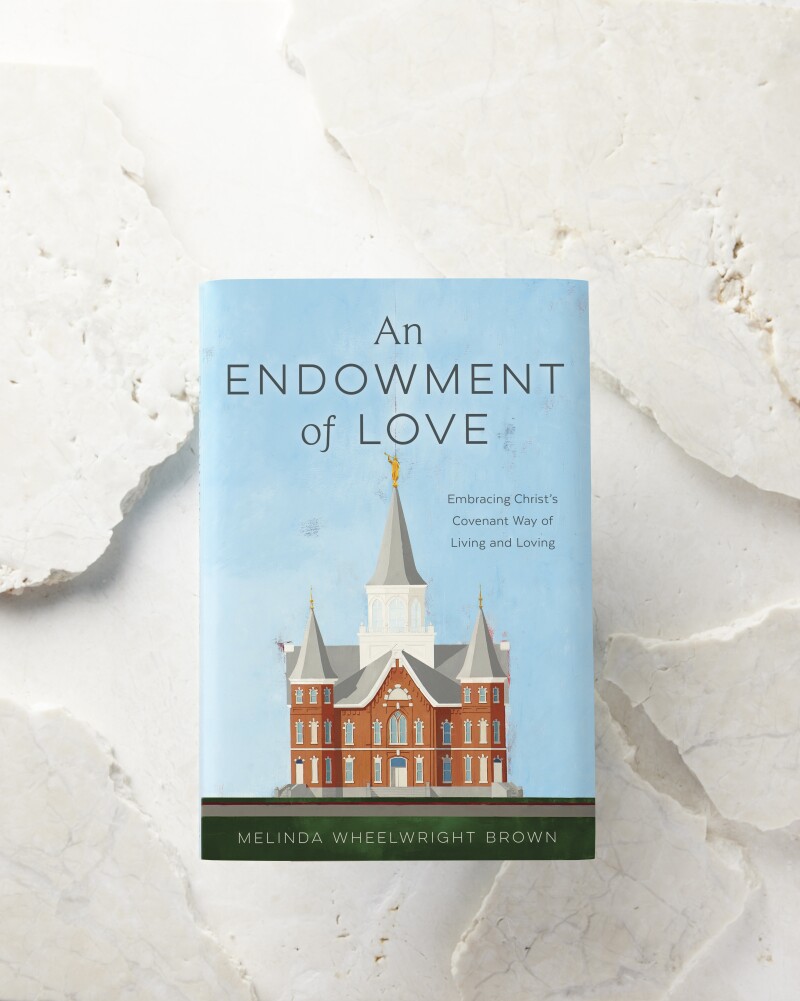Scholar and educator Melinda W. Brown’s new book, An Endowment of Love, is giving thousands of Latter-day Saints a fresh perspective on temple worship. After reading the book myself, I feel a deeper love and appreciation for temple endowment sessions.

Whether you are a seasoned temple-goer or new to the endowment ceremony, this book has insights we all need to hear. Here are just three of my favorite takeaways.
1. A Better Way to Think of ‘Keeping’ Covenants
In chapter three, Melinda helped me see the phrase “keeping my covenants” in a new, more loving light. She teaches that the word “keep” in the scriptures is translated from the Hebrew word shamar, which can “be more broadly thought of as to guard, protect, treasure, or cherish” (23).
By thinking, “How can I cherish my covenants?” rather than, “How can I keep my covenants?” I feel a deeper connection to the Savior. This reframing helps me see covenant living not as a list of rules to obey but as a divine relationship I repeatedly choose to honor and strengthen through my actions.
And I love how Melinda explains the life-changing effect of choosing a loving relationship with the Savior and His laws: “Loving His law transforms our actions as we cherish His way of living and loving and emulate it; simultaneously, He grows our understanding, capacity, and capability.”
2. A Clearer Understanding of Temple Worthiness
Melinda’s explanation of temple worthiness in chapter four is profoundly comforting and empowering. She explains that the qualifying standards to enter the temple “do not question your worth. It is not a question of whether or not God wants you in His temple. It is a question of whether you are currently willing and ready to embrace the obligations that accompany entering a deeper covenant relationship with the Lord” (28).
Melinda later continues, “Because you are His child, there is no question of your infinite worth; God is reaching out to you constantly, offering His divine love and assistance. Your worthiness, on the other hand, asks if you are reaching out toward Him” (29).
I appreciate the idea that the call to live worthy of the temple is a loving, generous invitation to deepen my relationship with the Savior. This definition helps me view temple recommend questions not as metrics of my worth but as opportunities to draw closer to Christ.
3. A New Perspective on Temple Garments
In the last chapter of the book, Melinda gave me a beautiful, new way to think about sacred temple garments. She wrote, “The sacred privilege to wear the holy garment is a departing gift to help us in our quest and to remind us continually of the Giver” (74, emphasis added).
I hadn’t thought of sacred temple garments as a departing gift from the Lord for me to use in my everyday life. As Melinda points out, we might want to stay in God’s “warm, secure, comfortable house,” but we must leave to live the covenants we make. But through wearing the temple garment, “we take His empowering presence with us and go create that love-filled sense of belonging within our own homes and relationships” (74).
In this way, we can be reminded of the love and power of our covenants no matter where we go, and we can use that love to make life better for others.
Much More to Learn
Those are three of my favorite takeaways, but Melinda’s book offers so much more. There are chapters looking at each of the five covenants we make in the temple endowment and how they “can improve and strengthen each of our interactions, both divine and mortal.” (I especially appreciated her insights on the law of consecration.)
You can read the first chapter of Melinda’s book here:
▶ How to feel at home in the house of the Lord
Find out more about the full book below.
A fresh perspective on the temple
More articles for you:
▶ The general conference quote that changed how I approach the temple
▶ Pres. Holland turns the phrase ‘going through the temple’ on its head
▶ New, incredibly beautiful ‘Gethsemane’ music video will give you chills


